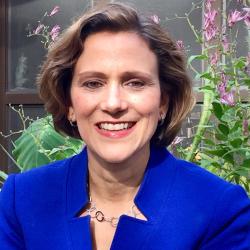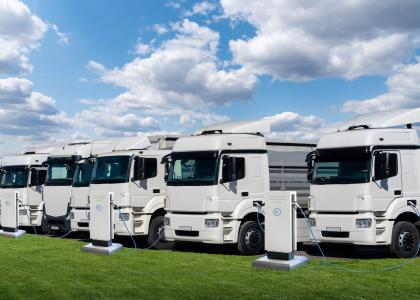The push toward efficient, high-performance buildings has entailed cutting-edge technologies and programs. Next week, at ACEEE’s popular biennial Summer Study on Energy Efficiency in Buildings, more than 350 speakers will explore this promising trend — from data analytics and connected devices to building codes and federal programs.
Register - Only a few days left
A notable success is the U.S. Environmental Protection Agency’s ENERGY STAR® Certified Homes program, which has seen phenomenal growth since its launch in 1996. This voluntary labeling program, already with 1.8 million certified homes, is well on its way to two million homes. Sam Rashkin led this effort until moving to the US Department of Energy to launch the Zero Energy Ready Homes (ZERH) program in 2012, which calls for greater energy efficiency.
At Summer Study, Rashkin will offer key takeaways of his experience. Chief architect of DOE’s Building Technologies Office, he will present the paper, “What We Learned Getting to 2 Million ENERGY STAR Certified Homes that is Positioning Zero Energy Ready Homes for Exponential Growth.” He said that while many factors contributed to the first program’s success, five were critical: energy efficiency, a supply chain, targeted goals, market-ready specifications, and effective messaging.
In a phone interview, excerpted below, Rashkin talked about the prospects for the ZERH program.
How is the program faring since its 2012 launch?
We have built a great foundation for zero. Every month, there are significant indications that we’re really getting to the tipping point. In the last few weeks, we picked up a 5,000-unit development in Fort Collins, Colorado, which is very significant because it’s 100% zero-energy ready. Late last year, we picked up a 3,200-unit development in Prescott, Arizona.
The label is really getting a lot of recognition. We add up everything going on, we have over 10,000 homes in the pipeline committed to getting certified. We’ve also picked up some leading large production builders. Meritage is getting ready to move into large subdivisions. The numbers aren’t really what they were with ENERGY STAR but all the signs are very positive. We are up against a major set of challenges to get this program off the ground.
What are those challenges?
- Resources. We have one-sixth the resources to do this program as the ENERGY STAR program has. They have 12-14 people. We have about two and a half people. For a national program, that’s incredibly small.
- The setting is completely changed. The number of diverse business options for builders to label their homes is so extensive. There’s a whole array of green labels, including ENERGY STAR and the RESNET Energy Smart Builders label. While ENERGY STAR was able to be a dominant label in the marketplace, we are fighting for our label’s recognition.
- We launched our program right on the heels of the Great Recession. It was very difficult to attract builders who were definitely in shock from the downturn. Coming at them with new requirements at that time was definitely more of a challenge than we ever had with ENERGY STAR.
- Very significantly, we didn’t have any dedicated salesforce. ENERGY STAR hitched its wagon to the then nascent HERS (Home Energy Rating System) verification process, which did take hold and got most of its revenue (80-90%) from the ENERGY STAR-certified program. With ZERH, we are fighting to get the raters’ attention.
- There’s an amazing number of different voices on “zero”. We’re working hard to get a common agenda so that zero doesn’t go the way of “green” with too many different meanings and thresholds. We’re working to corral the disparate voices.
Which building features most distinguish ZERH from ENERGY STAR?
There are three major differences. One, we require builders to go to the next-generation code, while ENERGY STAR is pegged to the current code. Second, on the comfort side, we require that ducts be inside conditioned space, and we require dehumidification solutions in hot, humid climates. Those are two insane things not to have in a new home. One of the reasons I jumped to the ZERH home program was to get some of the poor practices that you can still do with ENERGY STAR off the table. Third, we make indoor air quality mandatory. You have to do the full indoor air-plus package for zero-energy-ready homes.
To spur ZERH’s success, which specific marketing messages do you recommend?
We're really focused on one key simple concept that consumers can understand very quickly: This is a superior home experience. There are seven experiences that show that.
- Tens of thousands of dollar savings over a 30-year mortgage and often more than $100,000 in savings.
- Full thermal protection from the hottest and coldest weather.
- Total comfort taken to a whole new level because of these additional requirements.
- Healthy living so every day your family breathes better and that’s because of the indoor air package.
- Peace of mind from not having to worry about any moisture issues in your home and that’s because of a comprehensive water protection system.
- Certified performance because of independent verification, testing, and diagnostics to the most rigorous federal guidelines for a high-performance home.
- Enhanced value because you’re buying a home that meets and exceeds future expectations.
Once you’re in your home and you've passed some of the initial infatuation with a new house, all these experiences are amazingly important.




